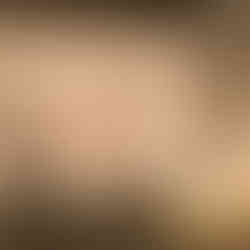Siah Armajani Retrospective in New York
- artandcakela
- Jun 5, 2019
- 4 min read
Updated: Jan 27

Siah Armajani, Follow This Line, Met Breuer; Photo credit Genie Davis
Siah Armajani: Follow This Line to the Met Breuer
Met Breuer, New York, NY closed June 2nd
Written by Genie Davis A trip to New York City inevitably leads to great museum art, which almost as inevitably leads to the discovery of art previously unknown. At the Met Breuer in late May, that discovery led to a fascinating retrospective, Siah Armajani: Follow This Line. It is the first such retrospective of the Iranian-American artist, and includes more than 100-works produced over the last sixty-some years.
Both architectural and graceful, the most fascinating section of the inclusive exhibition are the diminutive sculptural models of large public art pieces created by the artist – one of which was recently installed as a temporary piece in Brooklyn’s DUMBO community along the waterfront between the Brooklyn and Manhattan Bridges. Its enormously satisfying to see the perfect, miniature construction of this work and then to come across Bridge Over Tree in real life in the city. It was originally shown in a Minneapolis public park in 1970, and features a sharply angled peak beneath which a single evergreen tree is seemingly protected as the “bridge” rises over it. The bridge doesn’t link two disparate points, rather it establishes a link with the natural environment and the public, who are encouraged to explore the structure, to walk through something as fanciful and wonderful as a construction out of a fairy tale, one in which angular form and modern line leads to a wonderfully playful yet practical world, and one which also keeps a graceful watch over nature. In Brooklyn, children played on it, as if it were a part of a magical playground, which in a sense, it is.
If viewers “follow this line” of Armajani’s work in the Breuer exhibition, they can also view a different sort of bridge: a connective through-line from the artist’s early work while still a student activist in Tehran, when he created conceptual collages and political posters, to his rather astonishing Dictionary for Building series from the mid-70s, a vast assemblage of small scale sculptural/architectural models that give us tiny, perfect chairs, bridges, tunnels, and the constructs of rooms. They are charming, futuristic, and fantastical all at once. The works are an outgrowth of an architectural renewal project in Jackson, Minn., one designed to preserve the history of decaying 19th century buildings in the town. Armajani studied and worked to restore the buildings for a period of four years. This was the origin of these mysteriously perfect small works, constructed of wood, cardboard, and imagination: houses, bridges, furniture. There is a sense of whimsy and strangeness to the works, functionality turned into something almost strange and spiritual, as if misplaced stairways had an alchemic purpose – like those that lead to nowhere in the Winchester Mystery House in San Jose, Calif., designed to ward off evil spirits and ghosts.
Armajani came to the U.S. in the early 60s as a political exile, and there is a sense of the outsider looking-in throughout his work. Living in Minneapolis-St. Paul, he was also an outsider from the most significant art centers, which imparts his work with both a freshness and a somewhat dispassionate approach. It was then, and is now, impressively cutting edge, with a cool, reserved aesthetic that nevertheless gives viewers a sense of whimsy and which contains a really performative perspective. Each work, even the smallest, reminds one of a prop or an entire stage, waiting for the mind to follow the intellectual and artistic actions undertaken by the artist.
The feeling of observing a set ready for inhabitation by actors – or by viewers – continues with larger scale pieces works produced later in Armajani’s career, such as a “reading room” memorializing Italian-American anarchists Nicola Sacco and Bartolomeo Vanzetti. Recreated here, viewers are invited to sit inside the room, browse a library of eclectic books on subjects from ethnicity to revolution, and even take notes. It is not a comfortable space, all hard edges and barred windows, but it invites the viewer’s imagination to reside there, more than inviting the physical body, and perhaps to imagine the discomfort of being Sacco and Vanzetti.
From a television monitor displaying geometric digital images to the early collage works, and the main body of the exhibition – the sculptural constructs – Armajani’s line in this exhibition is exciting, bold, compelling, and yet also reserved. The artist’s “line” does not follow a traditional trajectory, but it nonetheless follows a riveting one. What does the world and its components – a bridge, a house, a room, a table, a school desk studded with pencils – look like to an artist and exile, to a realist drawn to the fantastic elements of even the most prosaic of objects? If we follow his gaze, his lines, we are led to a quite wondrous place, a land that he creates for himself, and opens for viewers to emigrate through its borders.
Met Breuer 945 Madison Ave, New York, NY, 10021
#losangeles #california #losangelesartist #art #painting #shoeboxpr #geniedavis #laverne #losangelesart #contemporaryart #southerncalifornia #abstract #collage #artgallery #artinterview #gallery #museum #NewYork #artandcake #artexhibition #installation #fineart #artist #soloshow #mixedmedia #arts #artreview #metbreuer #SiahArmajani #artmagazine #ArtandCulture #exhibition #exhibit #FollowThisLine
































